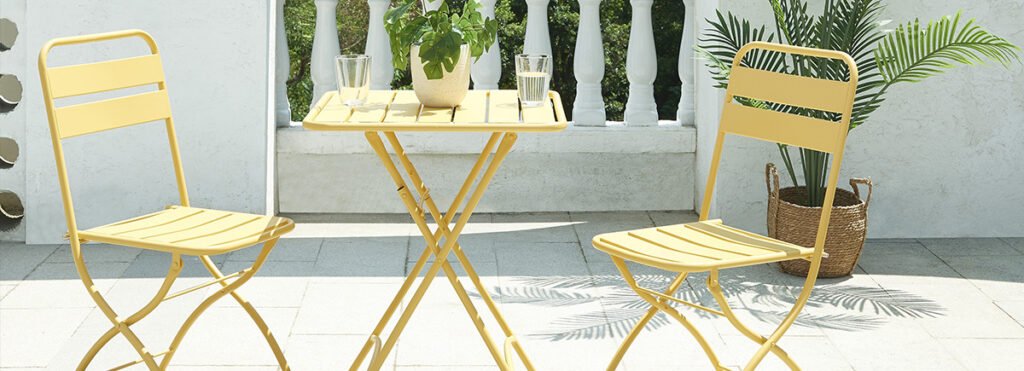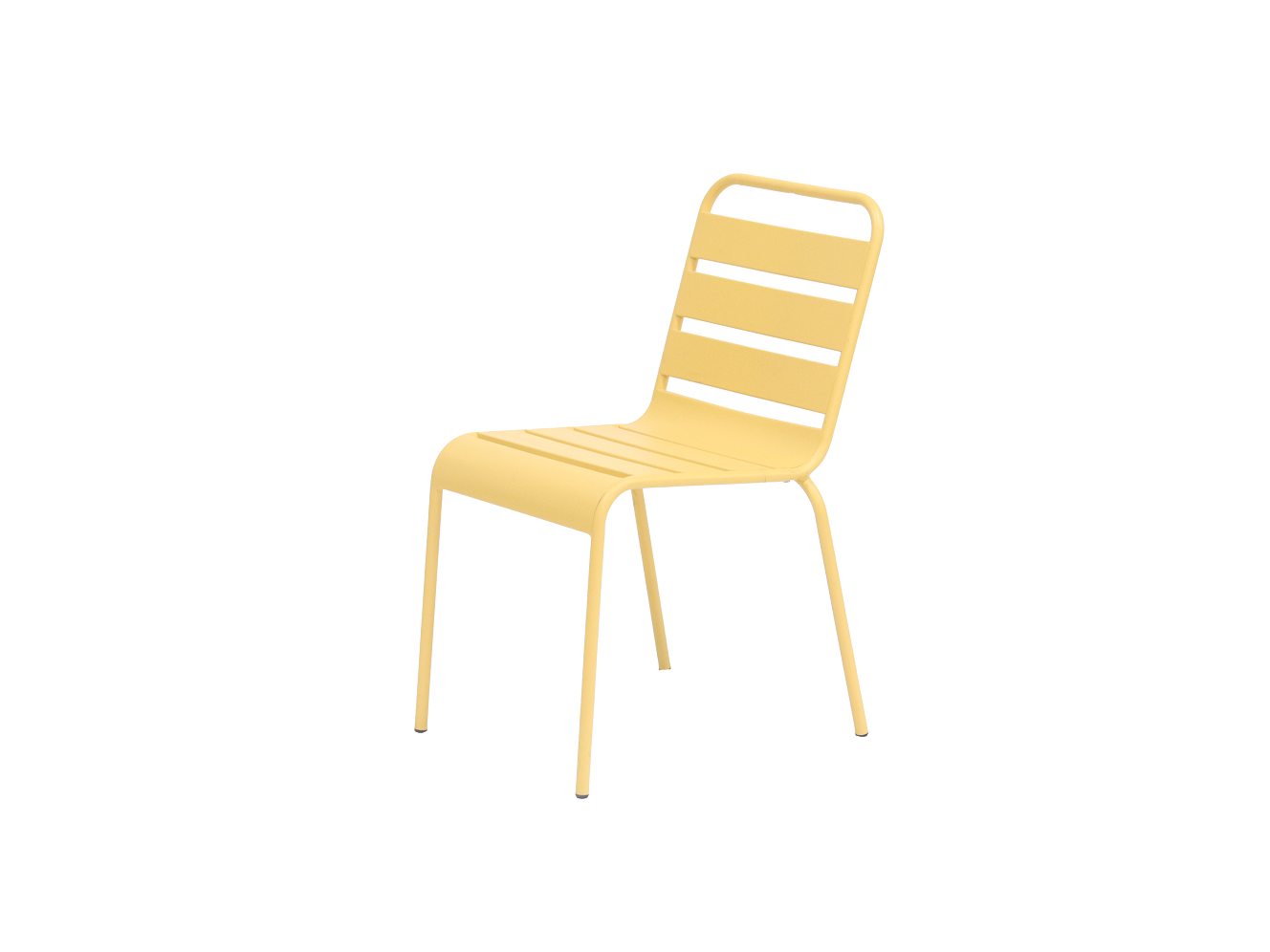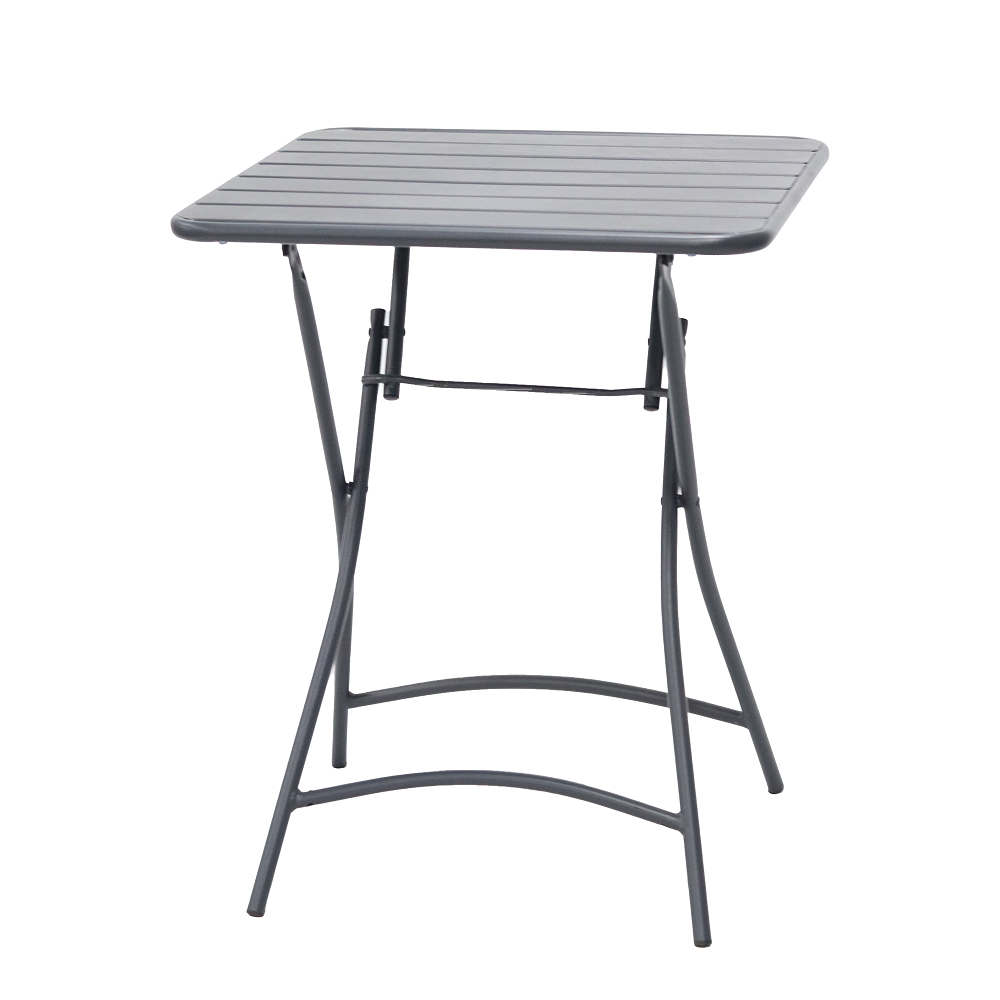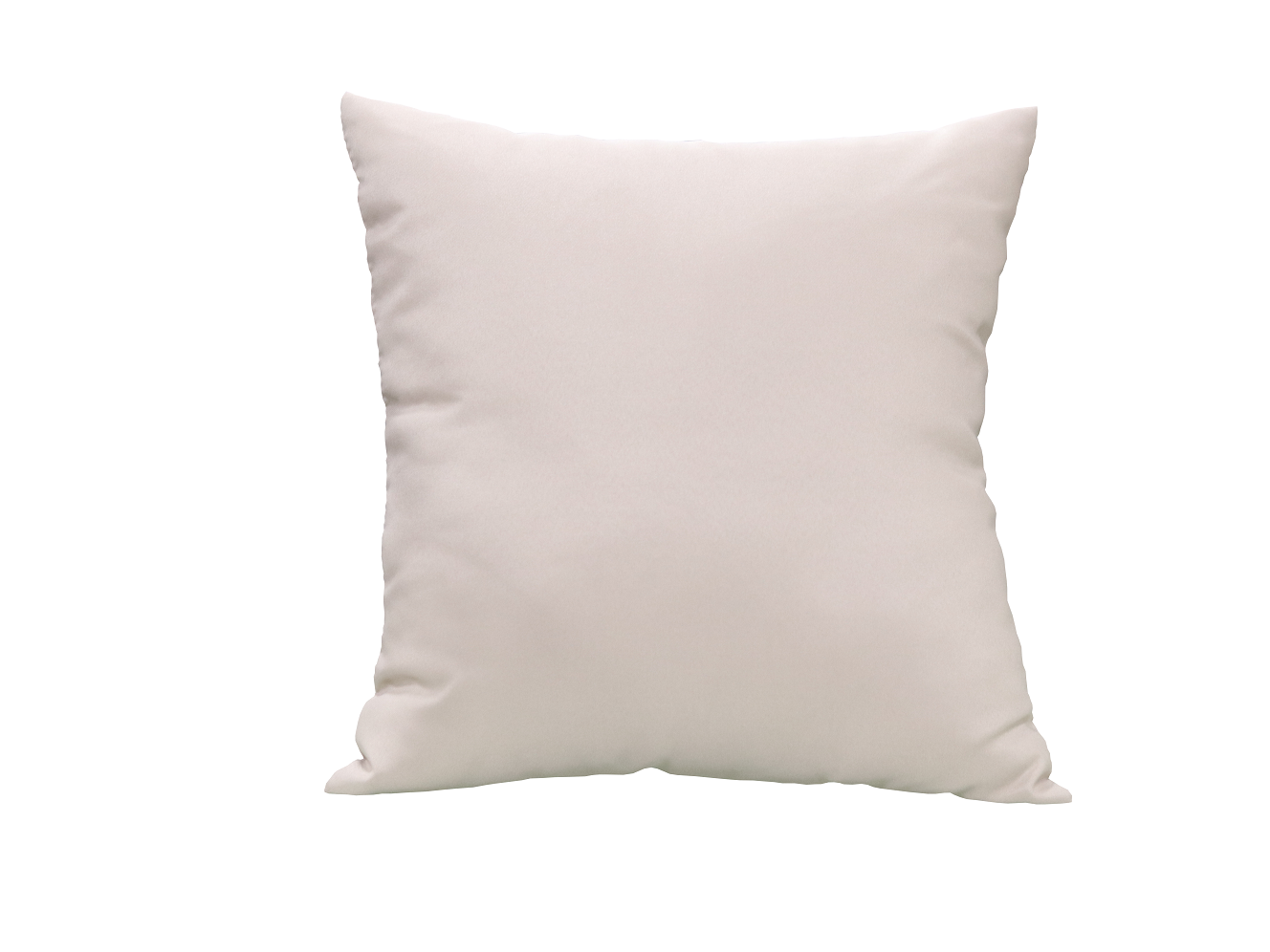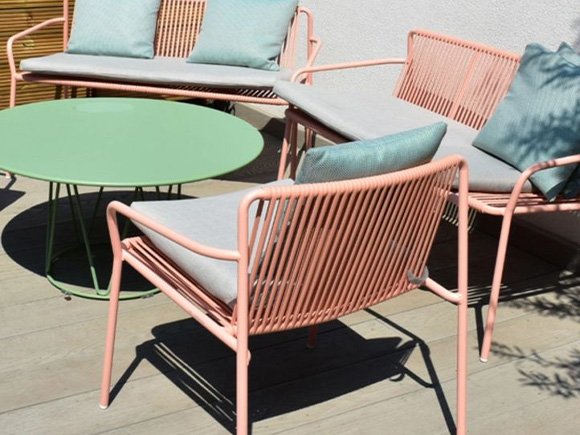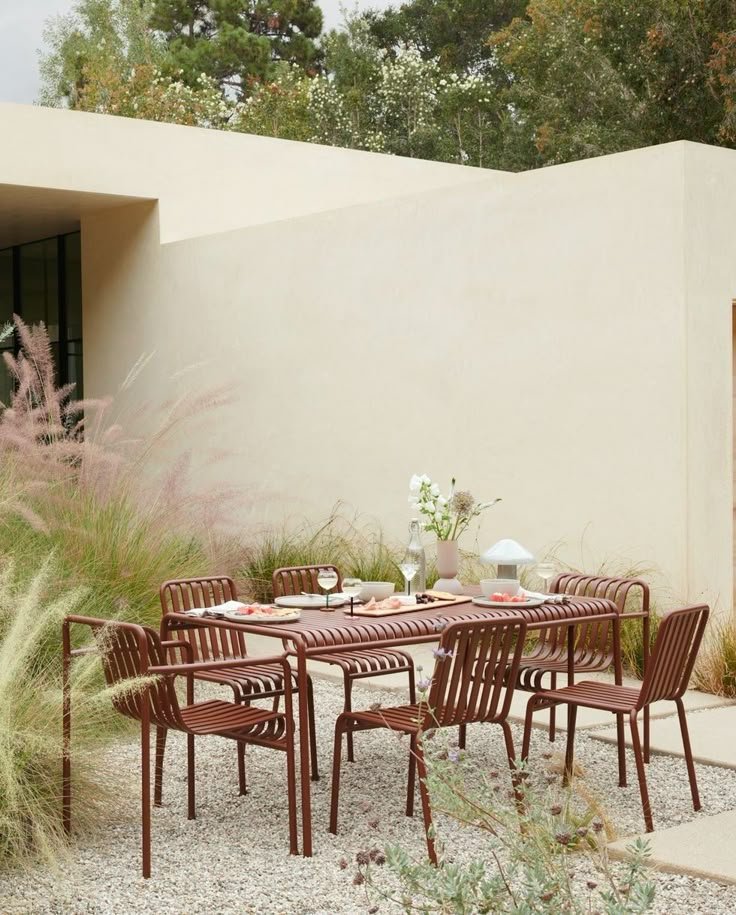Outdoor Metal Furniture Electrophoretic Coating Technology: In-depth Analysis of Process Types, Core Differences and Application Scenarios
As the core surface treatment technology for outdoor metal furniture, electrophoretic coating plays an irreplaceable role in enhancing its weather resistance, durability and decorative effect. However, there are significant differences between different electrophoresis process systems in terms of film-forming mechanism, performance and application conditions. In this paper, we will systematically analyze the three dimensions of process type, core performance comparison and application scenarios, in order to clarify the difference between various electrophoresis processes and their application value in the field of outdoor furniture.

1.Main types of electrophoretic coating process
The basic principle of electrophoretic coating is to utilize the applied electric field to drive the charged paint particles to migrate and deposit directionally on the surface of metal substrate to form a uniform and dense coating. Based on the different coating chemical systems and deposition mechanisms, the following two types of electrophoresis processes are mainly applied in the field of outdoor metal furniture:
1.Cathodic Electrophoretic Deposition (CED)
- Film-forming mechanism: The metal workpiece is used as the cathode, and the positively charged coating resin particles migrate to the anode (workpiece) and are deposited under the action of the electric field force, and the coating is formed by baking and curing.
- Coating system: Mainly adopts epoxy resin or polyurethane-based system, with excellent adhesion to the substrate and excellent corrosion resistance.
- Core Advantage: Excellent coating uniformity (especially for iron workpieces with complex geometries, deep holes or fine carvings), outstanding rust and corrosion resistance, ideal for outdoor environments with high humidity, rain and offshore high salt spray.
2.Anodic Electrophoretic Deposition (AED)
- Film-forming mechanism: The metal workpiece is used as the anode, and the negatively charged paint particles migrate towards the anode (workpiece) to be deposited under the action of electric field force. At the same time, a slight electrolytic oxidation occurs on the surface of the metal substrate, and the oxide film formed combines with the deposited coating.
- Coating system: mostly acrylic or phenolic resin system, relatively low cost, more flexibility in color selection (especially good at light colors, bright colors).
- Limitations: Coating thicknesses are relatively thin (typical film thickness range 10-20 μm) and corrosion resistance is generally lower than that of cathodic electrophoresis. There is a risk of corrosion spots when serving in harsh outdoor environments for long periods of time.

3.Positioning of the electrophoresis process in the surface treatment technology system
In order to define the technical advantages of electrophoretic coating more precisely, it is compared and analyzed with other surface treatment methods commonly used for outdoor metal furniture: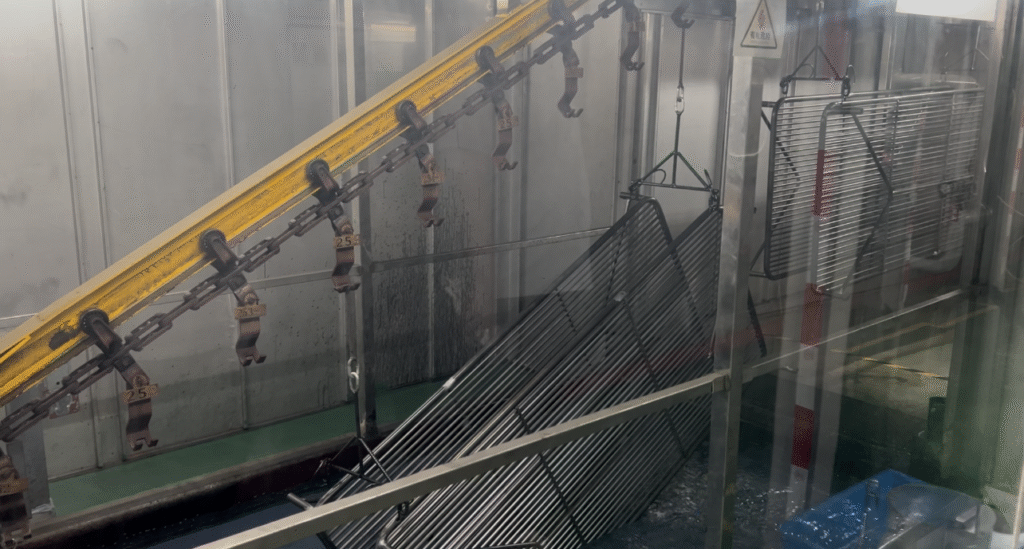
-
Comparison with traditional liquid spraying: Electrophoresis process can realize nearly 100% coating rate, the uniformity of the coating is far better than spraying (no brush marks, hanging), and the adhesion and corrosion resistance are significantly improved. For iron furniture with complex curved surfaces, inner cavities or fine hollow structures, electrophoresis has an absolute advantage in terms of penetration and covering ability.
- Comparison with powder coating: Electrophoretic coating is usually thinner, with better leveling and a denser and smoother surface, which has an outstanding effect as a primer anti-corrosion coating. In practice, the composite process of “electrophoretic priming + powder top coating” (Duplex System) is often used, taking into account the excellent anti-corrosion performance of the primer and the rich decorative effect and weather resistance of the top layer.
- Comparison with electroplating: The cost of electrophoretic coating is significantly lower than that of decorative plating, with a wider range of color choices and usually better environmental protection. However, it does not have the metallic texture and high gloss of electroplating layer, which is more suitable for the pursuit of practical protective performance and diversified color design, rather than metallic intrinsic luster products.
When choosing an electrophoresis process for outdoor metal furniture, it is important to consider the environment (humidity, salt spray conditions), budget and appearance requirements:
- For rainy areas, coastal areas or high-end products, cathodic electrophoresis is preferred (rust resistance and durability are primary considerations).
- Anodic electrophoresis (cost-effective and color flexible) may be considered for dry areas, basic products, or if a bright color design is required.
- If you are looking for the ultimate in protection, you can use the “Electrophoresis + Powder Coating” composite process, which combines rust protection with aesthetics.
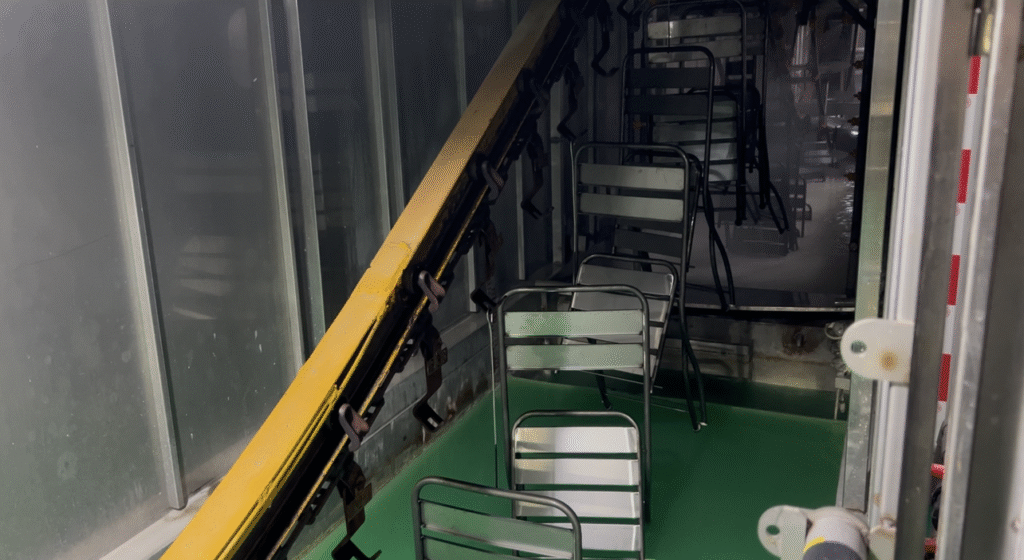
Redefining the Durability of Outdoor Metal Furniture with Automobile-Grade Standards
While most outdoor furniture still relies on traditional craftsmanship, we’ve brought the rigorous standards of the automotive industry into our production process—our electrophoresis line shares the same origin as Audi’s automobile production lines.
This production line adheres to automotive industry-grade ISO standards, with every step from pre-treatment to electrophoretic curing measured with micron-level precision. Today, it’s endowing our outdoor metal furniture with the same level of protective performance.
- The coating is uniform and dense, with seamless coverage even in gaps and crevices, boasting a thickness tolerance of ≤±2μm;
- It can withstand over 500 hours of continuous salt spray testing (equivalent to over 5 years of weather resistance in coastal environments), far exceeding ordinary products;
- Like an Audi body, it balances durability and aesthetics. The coating is as smooth as a car’s paint finish, with colors such as matte black and deep space gray remaining stable even after exposure to intense sunlight and heavy rain.
We don’t define outdoor furniture by “how many years it can last.” Instead, we promise with automobile-manufacturing logic: it will remain as good as new even after decades of wind, sun, and rain.